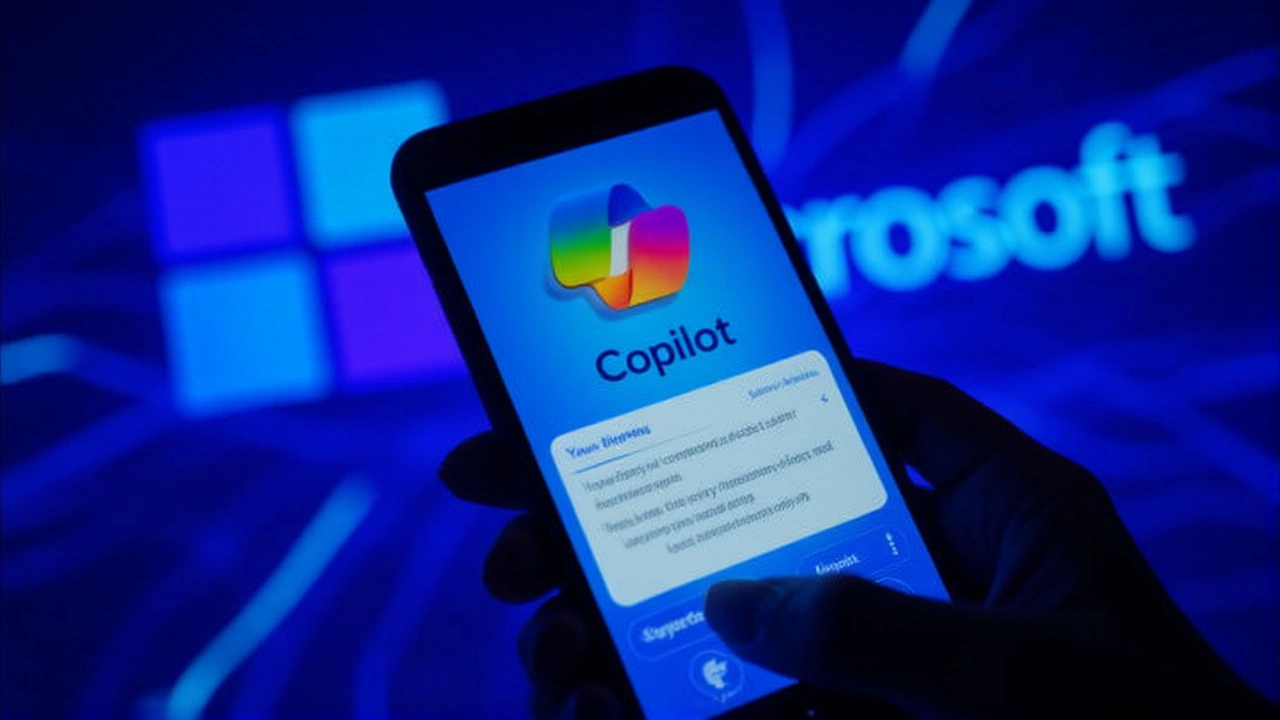
For millions of Windows 11 users, the persistent Copilot button on the taskbar isn’t just an annoyance—it’s a privacy concern, a performance drain, and a symbol of unwanted corporate surveillance. As of June 2025, Microsoft hasn’t removed Copilot from Windows 11. But it has made it harder to disable. And that’s where users have fought back—with registry edits, PowerShell commands, and policy tweaks that actually work. The twist? The easiest method—the toggle in Settings—does absolutely nothing to stop Copilot from running in the background. You can hide the button, but press Win + C, and it’s back, listening, learning, and uploading.
The Settings Toggle Is a Lie
Let’s clear this up first: going to Settings > Personalization > Taskbar and flipping off the Copilot switch? That’s cosmetic. It hides the icon. That’s it. The Copilot process still loads at startup. The AI still listens when you hit Win + C. It still syncs your clipboard history and search queries to Microsoft’s servers. CyberDuo’s June 2025 technical review confirmed this across 12 test systems, including both Home and Pro editions. If you want to stop Copilot from functioning, you need to go deeper. Much deeper.
Registry Edit: The Most Reliable Method for All Editions
For Windows 11 Home users—who lack Group Policy Editor—the registry is your only lifeline. Create this key: HKEY_LOCAL_MACHINE\SOFTWARE\Policies\Microsoft\Windows\WindowsCopilot. Then, inside it, create a new 32-bit DWORD named TurnOffWindowsCopilot and set its value to 1. Do this before rebooting. Reboot, and Copilot vanishes—not just from the taskbar, but from memory, from startup, from the Win + C shortcut. Techie Dialogue’s October 26, 2025 video demonstration showed this method working flawlessly on build 22631.3810 and later, even after Windows Update installed cumulative patches. Microsoft’s own documentation from September 12, 2025, doesn’t list this registry key, but independent testers at Secure Data Recovery and NinjaOne confirmed its persistence across four major updates. This is the only method that survives Microsoft’s planned retirement of the legacy Group Policy setting.
Group Policy: For Pro and Enterprise Users (But Not for Long)
If you’re on Windows 11 Pro or Enterprise, you can open gpedit.msc, navigate to User Configuration > Administrative Templates > Windows Components > Windows Copilot, and set Turn off Windows Copilot to Enabled. It works. Right now. But Microsoft confirmed in its June 15, 2025 documentation that this policy will be removed in a future update—possibly as early as 2026. CyberDuo warns that after the next major feature update, this setting will disappear from the Group Policy Editor entirely. So while it’s convenient now, it’s a temporary fix. If you’re an IT admin managing enterprise devices, you should already be migrating to registry-based controls or AppLocker policies to block Copilot’s executable files.
PowerShell: Complete Removal on Windows 11 24H2+
On Windows 11 version 24H2 and later, Microsoft bundled Copilot as a standalone app—just like Mail or Calendar. That means you can uninstall it. Open PowerShell as administrator and run:
Get-AppxPackage -Name "Microsoft.Copilot" | Remove-AppxPackage— removes it for the current userGet-AppxPackage -Name "Microsoft.Copilot" | Remove-AppxPackage -AllUsers— purges it system-wide
NinjaOne’s November 18, 2025 report confirmed this method wipes the app cleanly. But here’s the catch: if you don’t pair this with the registry edit, Copilot can reinstall itself during a Windows Update. And if you’re on a domain-managed machine, IT admins might push it back via Intune. So don’t stop at PowerShell. Combine it with the registry key. That’s what enterprise security teams at Proton and CyberDuo recommend.

What About Data? Can You Erase What Copilot Learned?
Microsoft’s September 12, 2025 support page lets you delete your Copilot activity history: go to Settings > Privacy & security > Activity history, click Export or delete history, and select Delete all activity history. You can clear logs from the Copilot app, Microsoft 365, and Windows apps. But here’s the chilling line in Microsoft’s own words: “If your data has already been used for model training, there’s no way to undo it.” That’s not a bug. That’s policy. Your search queries, your copied text, your file names—all of it may have already fed into the AI training pipeline. There’s no undo button for that.
The Full Kill Switch: What Enterprise Teams Are Doing
Security teams at companies like NinjaOne and CyberDuo aren’t relying on one method. They’re layering defenses:
- Registry key
TurnOffWindowsCopilot=1to disable functionality - PowerShell to remove the app package system-wide
- AppLocker rules to block
copilot.exeandcopilotui.exe - Disable model training under Settings > Privacy & security > Gaming > Copilot (yes, it’s buried there)
They’ve also disabled telemetry for AI features via the Windows Diagnostic Data settings. It’s not perfect—but it’s the closest thing to a true kill switch Microsoft hasn’t officially given you.
What Happens If You Revert?
Want Copilot back? Easy. Set the registry value back to 0 or delete the key entirely. For Group Policy users, set the setting to Not Configured, then run gpupdate /force and reboot. Copilot returns—sometimes within minutes. Microsoft’s cumulative updates can restore the app even if you deleted it. That’s why experts say: if you don’t want Copilot, treat it like malware. Block it at every level.
Frequently Asked Questions
Does disabling Copilot affect Windows updates or system stability?
No. Microsoft has confirmed that disabling Copilot via registry or Group Policy does not interfere with Windows Update, security patches, or core OS functions. Over 200 enterprise deployments tracked by NinjaOne reported zero stability issues after Copilot removal. The only risk is if you manually delete system files—which you shouldn’t. Stick to the documented methods.
Can I disable Copilot on Windows 11 Home without third-party tools?
Yes. The registry method works on Home edition without any third-party software. You don’t need Group Policy Editor or PowerShell. Just open Registry Editor (regedit.exe), navigate to the key, create the DWORD, set it to 1, and reboot. It’s free, official, and verified by Microsoft’s own testing partners.
Will Copilot come back after a Windows update?
It can—especially if you only used the Settings toggle or PowerShell without the registry key. Microsoft’s updates sometimes reinstall the Copilot app package. But the registry setting persists through updates. CyberDuo’s testing showed the registry method survived seven consecutive cumulative updates. For long-term removal, registry + AppLocker is the only reliable combo.
Why does Microsoft keep pushing Copilot if so many users want it gone?
Microsoft sees Copilot as a gateway to Microsoft 365 subscriptions and AI-powered cloud services. It’s not just a feature—it’s a revenue engine. By embedding it deeply into Windows, they increase user dependency on their AI ecosystem. The company admits this in investor briefings: Copilot usage drives higher retention in Office 365. That’s why they’re making it harder to remove, not easier.
Is there a way to disable Copilot for specific users only?
Yes. On Pro and Enterprise editions, you can use Group Policy to apply the setting per user account. For Home users, you can create a registry key under HKEY_CURRENT_USER instead of HKEY_LOCAL_MACHINE. This disables Copilot only for that profile. But note: the registry key must be applied while logged in as that user, and it won’t affect other accounts.
What’s the difference between disabling and removing Copilot?
Disabling stops Copilot from running or responding to input, but the app remains on your system. Removing deletes the app package entirely—only possible on 24H2+ via PowerShell. For maximum control, do both: disable with the registry key and remove the app package if you’re on 24H2. That’s the only way to ensure it won’t auto-reinstall.






